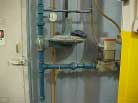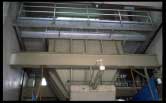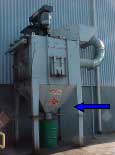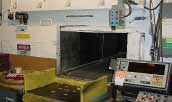By W. Jon Wallace, CSP, MBA
“One worker died after entering a toluene storage tank. During the rescue attempt, a fireman was killed when the tank exploded.”
Confined space fatalities such as this example are a common occurrence in the workplace. According to NIOSH, during the 10 year period from 1980 to 1989, 585 separate fatal incidents occurred in confined spaces, claiming 670 victims. Unacceptable atmospheric conditions, such as toxic atmospheres or lack of oxygen, contributed to over half of the confined-space related deaths. Engulfment from loose materials, such as excavation cave-ins, contributed to approximately one-third of the fatalities. The remaining 10% of confined space fatalities were caused by drownings and engulfments in other materials (i.e., sludge and manure).
On January 14, 1993, in response to the large number of employees killed while working inside confined spaces, OSHA issued its final rule on Permit-required confined spaces – 29 CFR 1910.146. This standard contains several requirements intended to ensure employee safety while performing work in confined spaces.
The first step in implementing an effective confined space program is to conduct a facility-wide confined space assessment to identify all confined spaces. OSHA defines a confined space as a space that meets all three of the following criteria:

AND
2—Has limited or restricted means for entry or exit (for example, tanks, vessels, silos, storage bins, hoppers, vaults, and pits are spaces may have limited means of entry).
This condition applies when you are required to bend or stoop to enter a space – making rescue difficult. Also, spaces that require a ladder to obtain entry satisfy this condition. However, if you can stand fully upright while walking through the opening – such as walking through a door way – and walk unobstructed, this condition is not met. Also, it is not considered restricted entry when access is obtained by walking down a set of stairs. To gain access into the pit shown below, employees must use the fixed ladder.

AND
3—Is not designed for continuous employee occupancy.
Is the space designed so that an employee may safely work in the space for a prolonged period of time – such as a service pit in an automotive garage? If so, this condition does not apply. Spaces like reactors, manholes, silos, and furnaces are not designed for continuous employee occupancy and therefore, satisfy this definition. The picture below is the inside of a wastewater pit.

| Once all confined spaces have been identified, the second step of the assessment is to identify those confined spaces that may pose a danger to employees. These spaces must be classified as permit-required confined spaces. To be a permit-required confined space, the space must only satisfy one or more of the following criteria: | |
| 1—Contains or has the potential to contain a hazardous atmosphere. Examples include spaces with an oxygen deficient (<19.5% oxygen) atmosphere or an oxygen enriched (>23.5% oxygen) atmosphere. Additional examples include confined spaces containing toxic atmospheres such as hydrogen sulfide gas, or spaces containing flammable vapors. The picture below is an oven heated with natural gas. | |

OR
2—Contains a material that has the potential for engulfing an entrant.
Grain, sand, dust, and water are examples of materials that may pose an engulfment hazard to employees. The picture shown below is a silo with product supplied from above that could engulf an employee working inside the silo.

OR
3—Has inwardly converging walls or a floor sloping down to a smaller cross-section.
Employees may become trapped in a space containing inwardly converging walls, making rescue difficult. Typical examples include hoppers, silos, and dust accumulators (shown below).

OR
4—Contains any other recognized serious safety or health hazard.
Examples include confined spaces that contain moving parts such as an auger, or a confined space containing a dangerous material such as hot molten plastic or steam. In addition, an elevator shaft would meet this condition. The photo below is a confined space that contains both a conveyor (mechanical hazard) and a radioactive source (health hazard).

The confined space assessment is now complete and all permit-required confined spaces have been identified. Employers must inform employees of the presence of confined spaces by posting danger signs, or by any other effective means, such as training and written procedures. Please remember that employers may utilize a definition of a permit-required confined space that is more stringent than OSHA’s definition.
If an employer elects not to have employees enter permit-required confined spaces, appropriate measure must be taken to prevent employees from entering these spaces. If it is decided that employees will enter permit-required confined spaces, the provisions of 29 CFR 1910.146 must be satisfied. However, a company may elect to use alternate procedures or reclassification. These options eliminate the requirements for entry permits, attendants, rescue provisions and mechanical retrieval devices.
Alternate procedures and reclassification are defined as follows:
Alternate Procedures: The employer can demonstrate that that the only hazard posed by the permit space is an actual or potential hazardous atmosphere and that continuous forced air alone is sufficient to eliminate any hazardous atmospheres and prevent their accumulation.
Reclassification: This applies to all spaces that pose no actual or potential atmospheric hazard and if all hazards are eliminated without entry into the space. Some common examples include augers that may be locked out from outside the space or an engulfment hazard where the material is removed from the confined space.
If alternate procedures or reclassification is not possible, all provisions of 29 CFR 1910.146 must be satisfied prior to employee entry into the space.
If you have any questions concerning this article or other safety issues, please contact W. Jon Wallace, “The Safety Guru”, at 919.933.5548 or by e-mail

